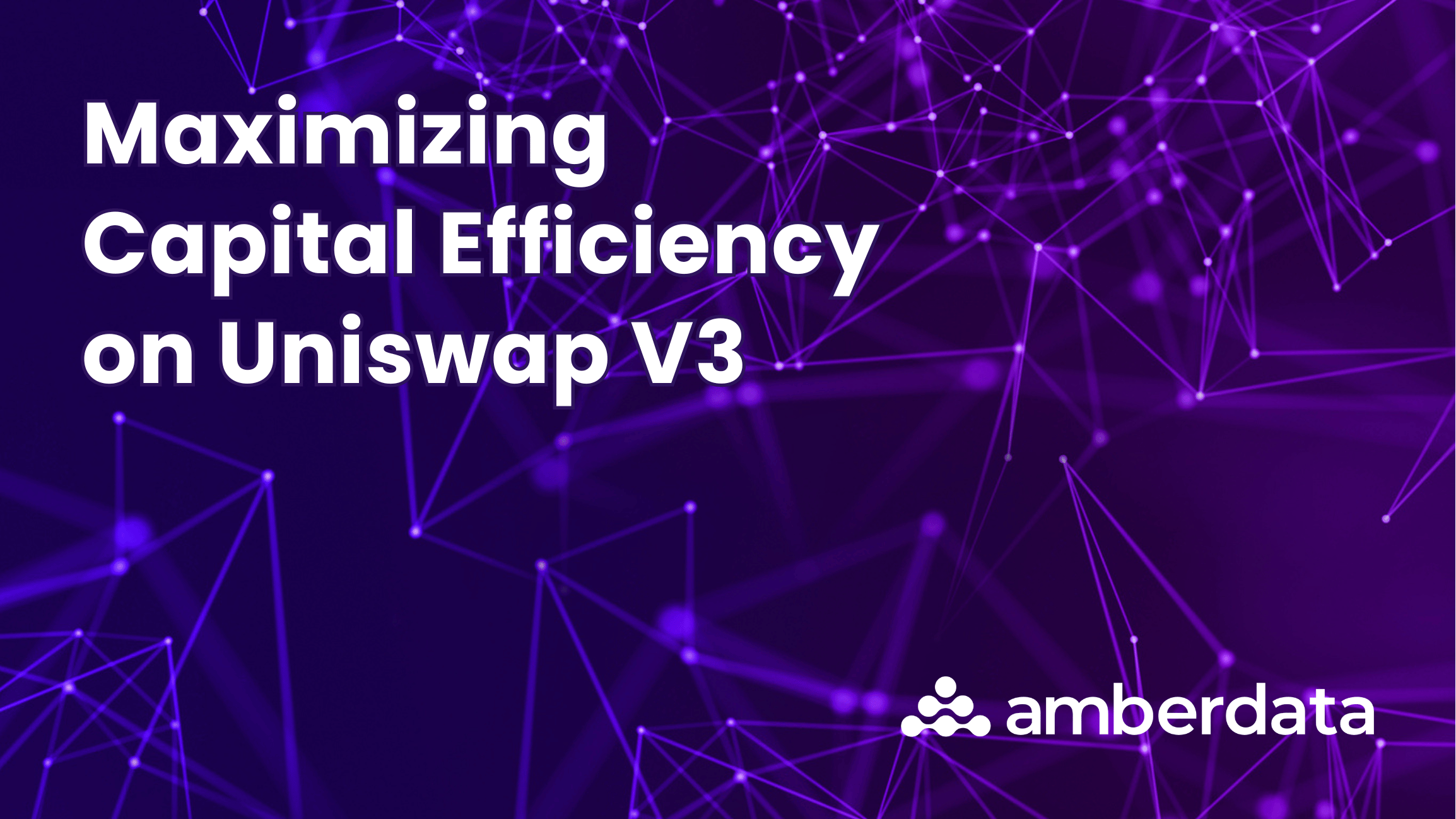
Uniswap v3 introduces groundbreaking features that set it apart from traditional Automated Market Makers (AMMs). At the core of Uniswap's v3 Current Liquidity Distribution lies liquidity providers (LPs) who assign their capital to particular price ranges within a pool. This targeted approach departs from the broader liquidity distribution seen in previous versions and other AMMs, enabling unprecedented capital efficiency. By focusing on liquidity, LPs can generate higher returns on their investments, as their funds are only used when the asset price is within their specified range, minimizing slippage and improving trade execution.
Uniswap v3 introduces multiple fee tiers, providing LPs with the flexibility to adjust their risk and return profile based on the expected volatility of the pool. This feature allows LPs to choose higher fee tiers for pools with greater price volatility, compensating for the increased risk, or lower fee tiers for more stable assets, aligning fees with market dynamics.
Factors Affecting Capital Efficiency
Liquidity providers primarily determine capital efficiency in Uniswap v3's adept range selection and liquidity concentration, strategic processes that involve allocating liquidity within specific, calculated price ranges. This focused approach ensures that LPs' capital is actively utilized, optimizing the accrual of trading fees relative to the capital invested.
Unlike broader liquidity provision strategies that may leave capital idle during price movements outside these specified ranges, range selection and liquidity concentration aim to maximize capital efficiency by engaging assets within targeted price intervals. The success of this strategy relies on in-depth market analysis and predictive insights into future price movements, prompting LPs to adopt strategies ranging from conservative, with broad range coverage to hedge against volatility, to aggressive, targeting narrower ranges for potentially higher fee accumulation but with the increased risk of being out of range.
Impermanent Loss Mitigation Strategies
Impermanent loss occurs when the price ratio of assets in a liquidity pool changes after deposit, potentially reducing the value of a liquidity provider's holdings compared to holding the assets outside the pool. To mitigate this, LPs can use range-bound liquidity provision, selecting price ranges that minimize exposure to volatile price movements.
Asymmetric liquidity provision, another strategy, involves skewing the investment towards one asset over another based on expected price trends, reducing susceptibility, and properly managing impermanent loss.
Strategies for Maximizing Capital Efficiency
Utilizing multiple DeFi price data ranges is a strategy for liquidity providers (LPs) on Uniswap v3 that involves distributing their capital across various price intervals within a liquidity pool. This diversification tactic enhances capital efficiency by allowing LPs to capture trading fees from broader market conditions rather than being confined to a single price range. It also spreads the risk associated with historical price data and volatility, as some segments of the capital will be active and earning fees even if other segments fall outside the current price.
Selecting the optimal price ranges requires an analysis of market trends and volatility predictions, enabling LPs to adjust their allocations in response to anticipated market movements, thereby maximizing potential returns while minimizing exposure to unfavorable price shifts.
Dynamic liquidity management allows liquidity providers (LPs) to adjust their capital deployment in response to market changes, enhancing capital efficiency on Uniswap v3. Utilizing automated rebalancing algorithms and oracle-based triggers, LPs can realign their liquidity distribution to optimal price ranges as market conditions shift. This proactive approach mitigates risk and capitalizes on emerging opportunities by aligning liquidity with the most favorable market segments. As a result, LPs maintain a competitive edge, ensuring their investments are positioned to capture maximum returns despite the inherent volatility of cryptocurrency markets.
Advanced Strategies
- Advanced AMM strategies, including curve positioning and liquidity mirroring, enable precise control over liquidity deployment, maximizing returns from market movements.
- Algorithmic trading strategies further refine capital efficiency, automating trades based on predefined conditions to capture the best opportunities.
- Integrating Uniswap v3 liquidity provision with yield farming and liquidity mining strategies offers diversified revenue streams, enhancing overall returns.
- Smart contract interactions with other DeFi protocols, such as leveraging Aave to borrow funds at lower rates to provide liquidity on Uniswap v3, exemplify strategic capital allocation. Another example is utilizing Compound to earn interest on idle assets while simultaneously participating in liquidity provision, maximizing asset utilization and efficiency across DeFi platforms.
Risks and Considerations
Maximizing capital efficiency on Uniswap v3 exposes liquidity providers (LPs) to risks such as impermanent loss, where asset price changes diminish the value of their pooled investments. Additional concerns include slippage, leading to less favorable trade executions, and smart contract vulnerabilities that may compromise asset security.
LPs must also navigate risks associated with exposure to volatile assets, which can rapidly alter liquidity positions and potential market manipulation tactics that could affect asset prices unfavorably. These considerations underscore the importance of risk management strategies and thorough market research for LPs aiming to optimize their returns on Uniswap v3.
Final Thoughts
We have explored the innovative features of Uniswap v3, emphasizing strategies for maximizing capital efficiency, mitigating risks like impermanent loss, and navigating regulatory landscapes. Liquid providers can optimize returns and minimize risks by leveraging advanced AMM strategies, dynamic liquidity management, and smart contract integrations. As the DeFi space evolves, understanding and adapting to these complexities is crucial for success.
For a deeper dive into minimizing risks and enhancing returns on Uniswap v3, we invite you to download our Strategies For Mitigating Impermanent Loss Across Uniswap V3 research report.
Related Content
Discussion of Uniswap v3 for Liquidity Providers Featuring Amberdata Research Team
Amberdata
Amberdata is the leading provider of global financial infrastructure for digital assets. Our institutional-grade solutions deliver data, analytics and comprehensive tools and insights that empower financial institutions to research, trade, and manage risk and compliance in digital assets. Amberdata serves as a...
